Milan, a city celebrated for its rich historical tapestry and vibrant cultural scene, is also home to some of Italy’s most stunning gardens and parks. These green havens contrast with the city’s sleek architectural lines, offering a tranquil escape from the urban bustle. We explore these verdant spaces that not only offer leisure and recreation but are also cornerstones of Milan’s history and commitment to combining nature with urban living.
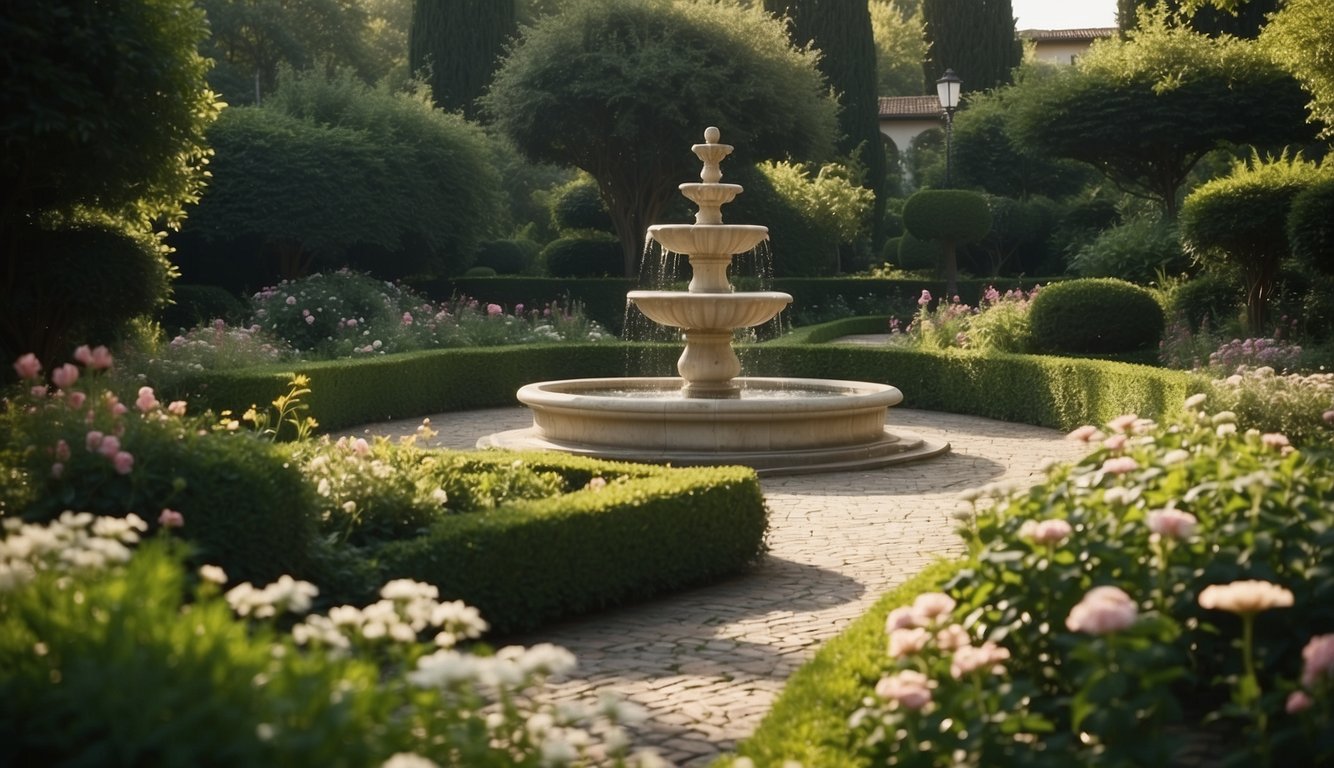
As we traverse the city, we find gardens steep in history such as the Botanical Garden of Brera, a peaceful oasis that dates back to the 18th century, nestled behind the austere walls of the Palazzo di Brera. Meanwhile, modern projects like the City Life Park demonstrate how Milan casts an eye toward the future, marrying cutting-edge design and green urban spaces. This interplay between the past and the present shapes the lush landscape of Milan, making it as much a city of gardens as it is a hub of fashion and design.
Gardens in Milan
Key Takeaways
- Milan’s gardens are pivotal to the city’s historical and cultural narrative.
- The city’s parks and gardens are embodiments of Milan’s architectural diversity.
- These green spaces are essential for leisure and relaxation within the urban environment.
History and Culture of Milan
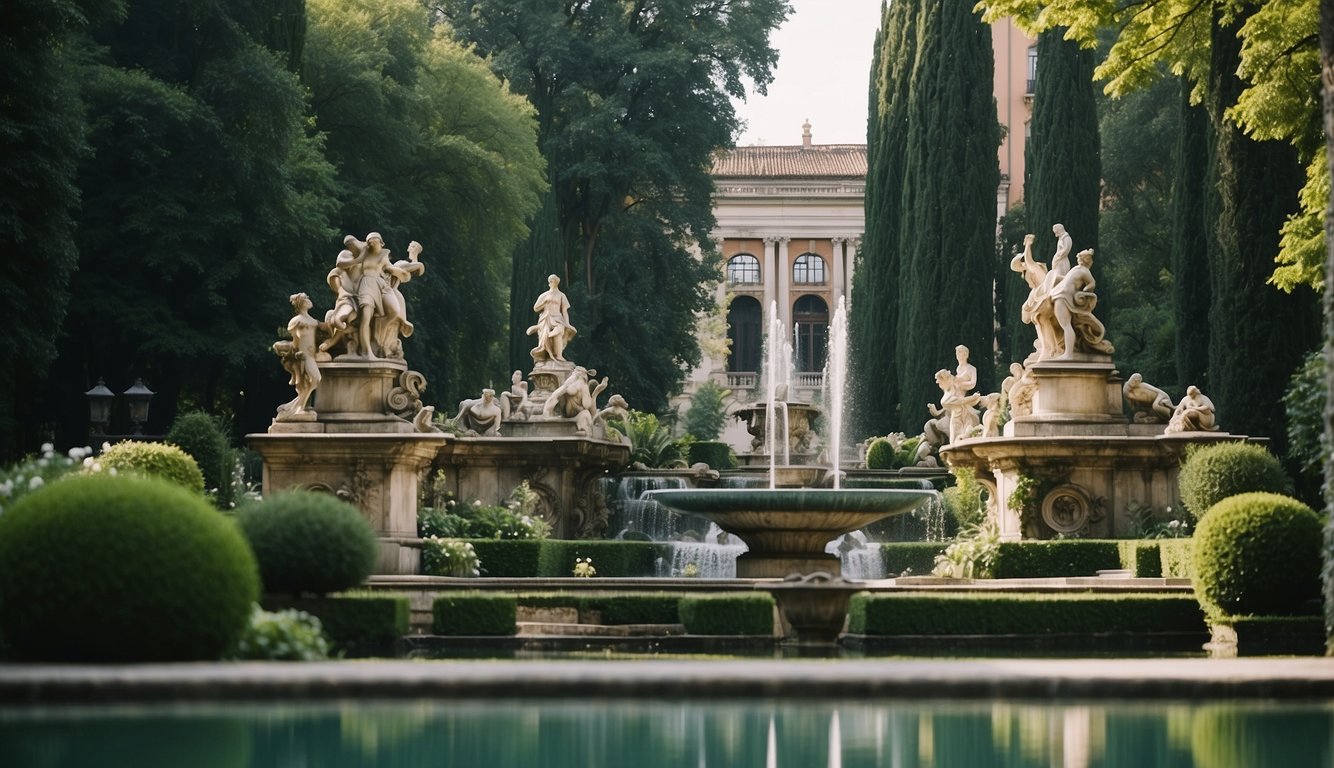
Exploring Milan’s gardens leads us into the very heart of its history and culture, where centuries-old landmarks meet the cultural significance that has shaped this iconic Italian city. As we wander through the lush greenery, the storied past of Lombardy’s capital unravels, celebrating influential figures like Leonardo da Vinci and the reforms of Empress Maria Theresa of Austria.
Historical Landmarks
Milan is a city etched with history, where every corner tells a tale of its illustrious past. At the center stands the majestic Duomo, a masterpiece of Gothic architecture and the third-largest church in the world. It’s the emblem of Milanese splendor, deeply intertwined with the city’s identity since its inception. Nearby, the Last Supper, Da Vinci‘s most renowned mural, quietly rests within the walls of the Convent of Santa Maria delle Grazie, offering visitors a glimpse into the genius of the Renaissance.
Not far from the bustling center, the Navigli canals, once the lifelines of commerce and transport, now provide a charming backdrop to modern life. Another treasure, the Casa degli Atellani, houses the vineyard once gifted to Da Vinci by Ludovico Sforza, Duke of Milan. These storied sites stand as sentinels to Milan’s rich heritage, each with a narrative deeply woven into the city’s fabric.
Cultural Significance
Under the Habsburg rule of Empress Maria Theresa of Austria, Milan saw an era of cultural and civic renewal. The empress’s influence heralded significant urban developments, including the establishment of verdant spaces for the public’s enjoyment. Among these green sanctuaries is the Indro Montanelli Gardens, once known as the Public Gardens, which stand as Milan’s first public park and are a testament to the city’s historical reverence for communal leisure spaces.
The cultural heritage of Milan is not only confined to its historical landmarks but also pulsates through its living institutions. Universities, galleries, and theaters are mainstays of Milan’s cultural landscape, educating and inspiring generations. Indeed, institutions like the Botanical Garden of Brera, established for both pleasure and study, still provide rare botanical specimens to this day, mirroring the city’s longstanding commitment to cultural enrichment and education.
Milan’s Architectural Marvels
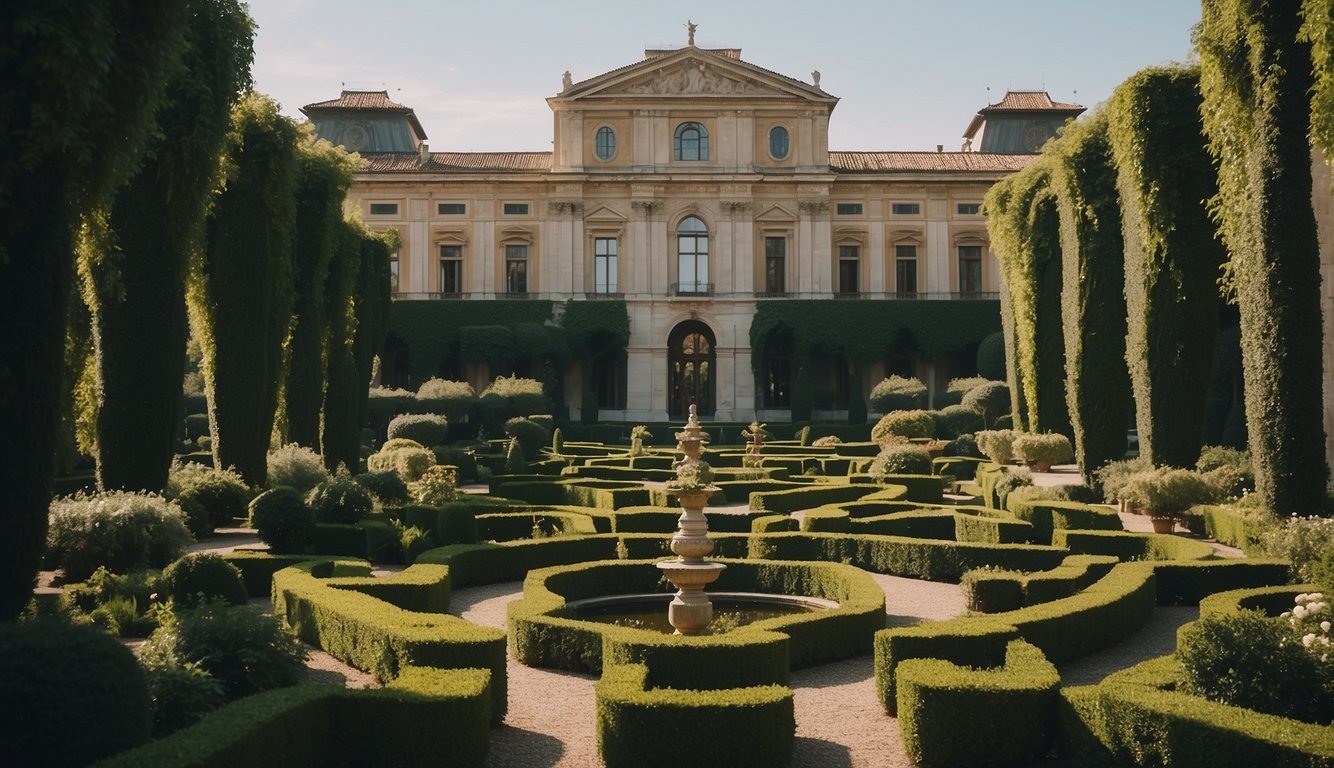
Milan’s landscape tells a story of historical richness fused with modern innovation. We see this in the grandeur of its historic edifices and the bold statements of its contemporary designs.
Important Buildings and Structures
Our journey through the architectural wonders of Milan cannot begin without mentioning the Castello Sforzesco, a robust fortress home to several of Milan’s museums and art collections. Another gem is the neoclassical Villa Belgiojoso Bonaparte, designed by Giuseppe Piermarini, which now houses the Galleria d’Arte Moderna.
Moving toward the heart of Milan’s culture, we find Palazzo Brera, an impressive structure housing the Brera Art Gallery. It stands as a proud testament to the city’s contribution to the arts, both historically and in contemporary times.
Not distant from these historical monuments is Arco della Pace, or “Arch of Peace,” punctuating the head of Sempione Park with its neoclassical splendor, a symbol of peace and a monumental gateway for the city.
Modern Developments in Design
Milan’s fashion industry is globally acclaimed, yet our city’s commitment to design extends strongly into our architecture. The Porta Nuova district stands as an embodiment of this, brimming with innovation. A prominent feature of this area is the Vertical Forests – a pair of residential towers that blend urban living with nature, cultivating a harmonious environment in a bustling cityscape.
These contemporary structures not only redefine our city’s skyline but also establish Milan as a leader in eco-sustainable architecture. Our commitment to design and architectural progress continues to shape not just functional spaces, but a future where urban life and nature coexist seamlessly.
Parks and Gardens
Milan offers a diverse range of green spaces, from the botanical wonders at the Brera Botanical Garden to the sprawling expanses of Sempione Park. These areas provide crucial natural havens that contribute to the well-being of residents and visitors alike.
Public Parks in Milan
Sempione Park, located behind the imposing Sforza Castle, stands out as a premier destination for relaxation and recreation. The park is home to a rich variety of vegetation and foliage, picturesque ponds, artificial rocks, and benches where one can enjoy a moment of repose. It is also a cultural hub, housing the Natural History Museum and a range of statues that add to its charm. Significantly, The 10 Best Things to Do – Attraction Milan offers insights into the variety of activities available at these locales.
Porta Venezia is another hub of greenery well known for its associated gardens, notably the Giardini Pubblici Indro Montanelli. These gardens provide a tranquil space away from the urban rush, highlighted by its old trees and neoclassical buildings, one of which houses the Natural History Museum. For those who value innovative urban design, the Biblioteca degli Alberi, or “Library of Trees,” showcases modern landscaping within Milan’s Porta Nuova district, mixing nature and architecture seamlessly.
The Role of Green Spaces in Urban Areas
Green spaces in urban areas such as Milan play an essential role in enhancing the quality of life. They are not just areas for leisure but also contribute to environmental health, offering habitats for various species and aiding in air purification. Green spaces like the Brera Botanical Garden, a historic gem nestled within the artsy Brera district, allow for biodiversity conservation and provide educational opportunities through its array of plant species. Beyond recreation and conservation, they also have a social function, acting as meeting points where people can connect amid natural settings.
Further north, Parco Nord serves as a vast area for sporting activities, community gatherings, and simply enjoying the scenery, illustrating the diverse purposes that parks can fulfill. With varying topography, such as hills like Monte Stella, green spaces create a dynamic environment for exploration and physical activity. Essentially, parks and gardens are pivotal for sustaining urban ecosystems, where statues, trees, hills, and ponds collectively enhance aesthetic appeal and promote ecological harmony.
Museums and Exhibitions
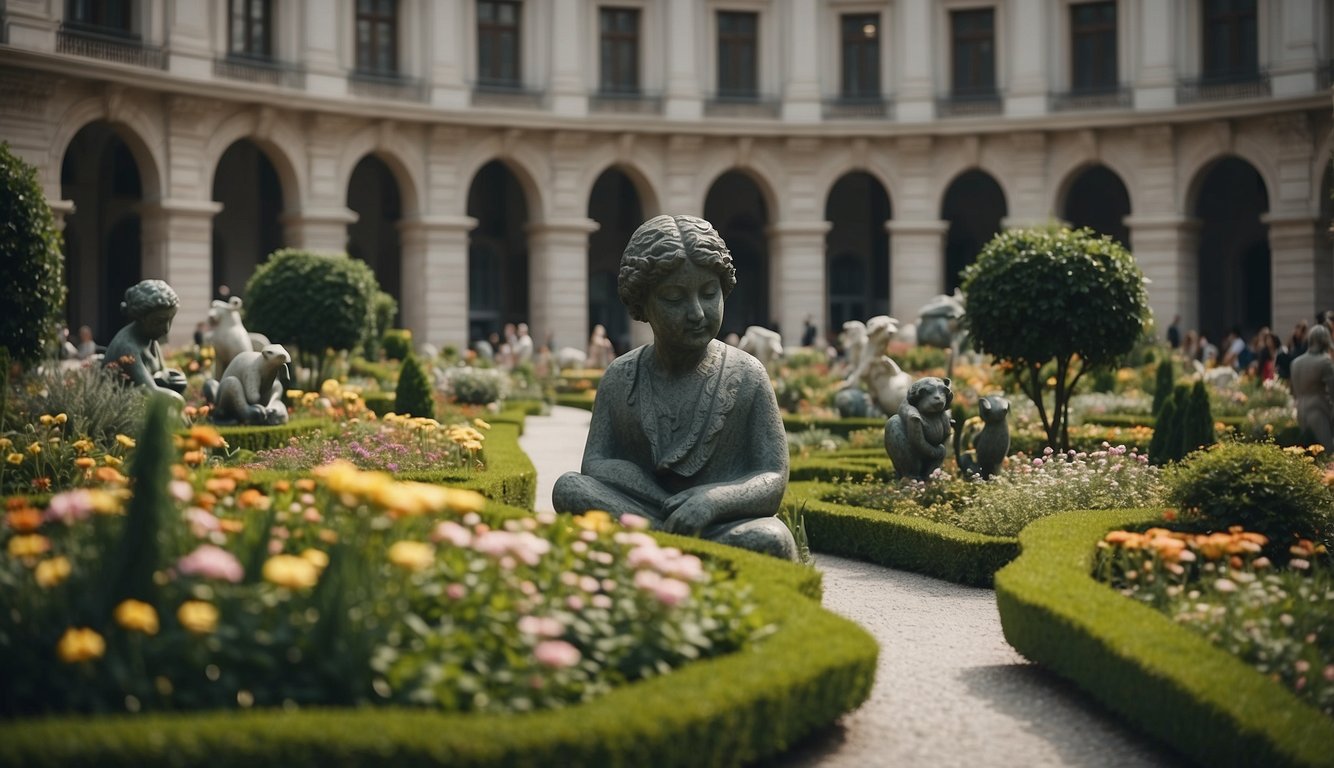
Milan is not just about fashion and business; it also boasts a rich array of cultural institutions that encompass art, history, and science. Our museums and exhibitions stand as pillars of knowledge and creativity, offering a diverse experience for all visitors.
Key Museums to Visit
-
Pinacoteca di Brera: Housing one of Italy’s most significant art collections, the Pinacoteca di Brera features masterpieces from Italian artists, as well as a fine collection of works from the Renaissance period. Make sure to visit the Brera Art Gallery to immerse yourself in northern Italian art.
-
Museo di Storia Naturale: As one of the highlights of Milan’s educational scene, the Natural History Museum informs and enchants with exhibits on paleontology, mineralogy, and natural sciences. Learn more about the story of life on Earth by exploring their extensive collections.
-
The Planetarium: The Ulrico Hoepli Planetarium is an oasis for astronomy enthusiasts, offering educational shows that transport visitors across the galaxy. It is an excellent place for research and discovery, especially for those curious about the celestial world.
-
Galleria d’Arte Moderna (GAM): With an exquisite collection emphasizing modern Italian art, GAM showcases pieces from the 18th century to the contemporary era. Milan’s modern art scene thrives at this site with rotating exhibitions and collections that span various artistic movements.
Educational Activities and Research
Milan’s museums not only celebrate art and science as static displays but also engage the community through educational programs and research initiatives.
-
Royal Palace: This historical site regularly hosts exhibitions exploring a myriad of themes, ranging from classical art to modern installations. Its iconic halls offer a robust educational program that includes guided tours and workshops for all age groups.
-
Botanical Garden of Brera: Nestled within the Brera district, the botanical gardens offer a living museum experience. Their importance for biological research and education continues to grow, as does their contribution to botany and horticulture.
Leisure and Recreation in Milan
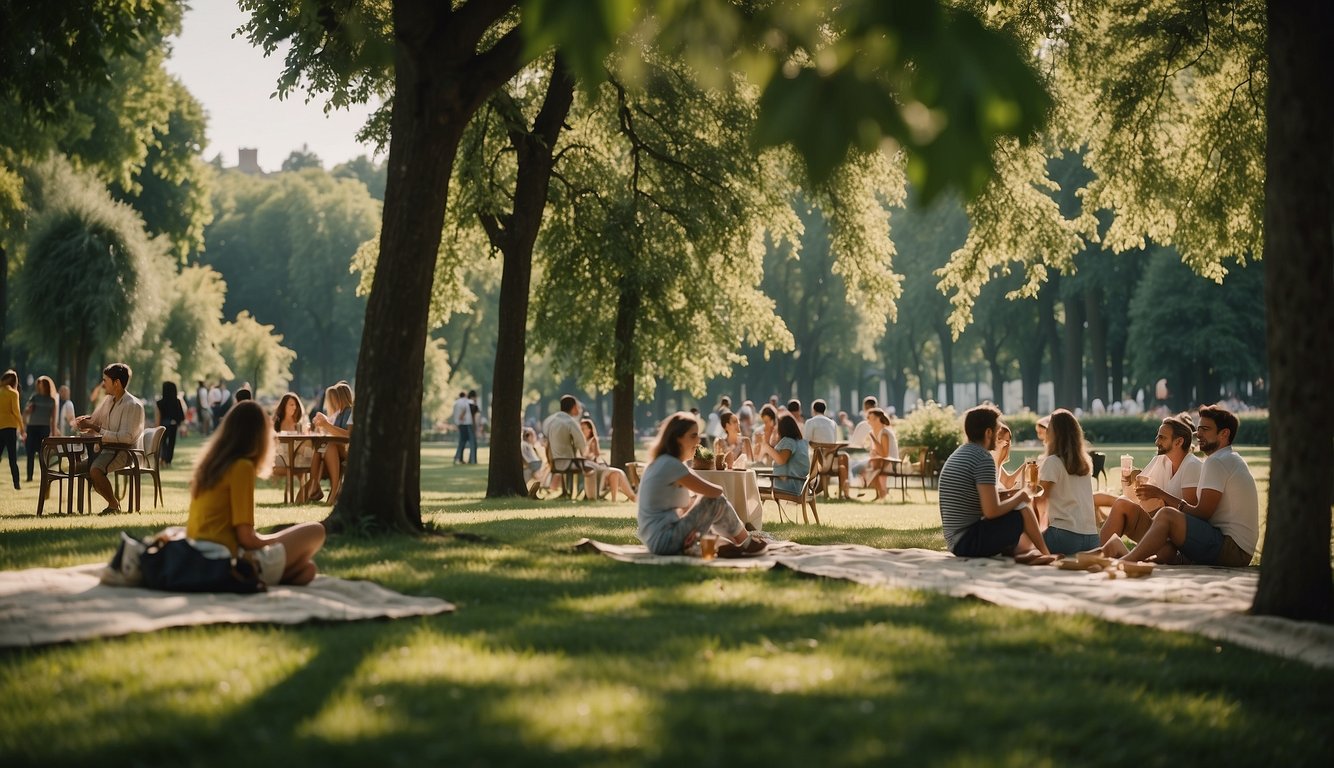
In Milan, we find an eclectic mix of entertainment facilities and shopping and dining experiences that provide both locals and visitors with a wide array of leisure options. From the vibrant atmosphere of public parks to the extensive walking tours that cover the city’s historical quarters, Milan offers a balanced mix of recreation and relaxation.
Entertainment Facilities
Milano is home to a variety of entertainment facilities that cater to all ages and interests. For families, playgrounds are scattered throughout the city, offering a safe and fun space for children to play. One can find these playgrounds in numerous public parks, such as the Giardini Pubblici Indro Montanelli, a historical garden that has been a leisure spot since the 18th century.
For sports fans, the San Siro Stadium, officially known as Stadio Giuseppe Meazza, is a must-visit. Whether you’re there for a captivating football match or to take part in a tour, experiencing the exhilarating atmosphere of this iconic stadium is something truly special.
Shopping and Dining Experiences
When it comes to shopping and dining, Corso Buenos Aires stands out as one of the longest shopping streets in Europe. This bustling shopping area invites us to stroll along its length, where we can find everything from high-street fashion to unique boutiques. Benches are strategically placed for those who wish to rest or simply soak in the vibrant energy of the city.
Meanwhile, Milan’s food scene offers an array of culinary delights that range from traditional Italian cuisine to modern fusion dishes. Exploring the city’s dining options is a treat for the palate, with both upscale restaurants and charming cafes dotting the cityscape. It’s an essential part of any walking tour and a testament to Milan’s reputation as a city of both fashion and taste.
Conclusion
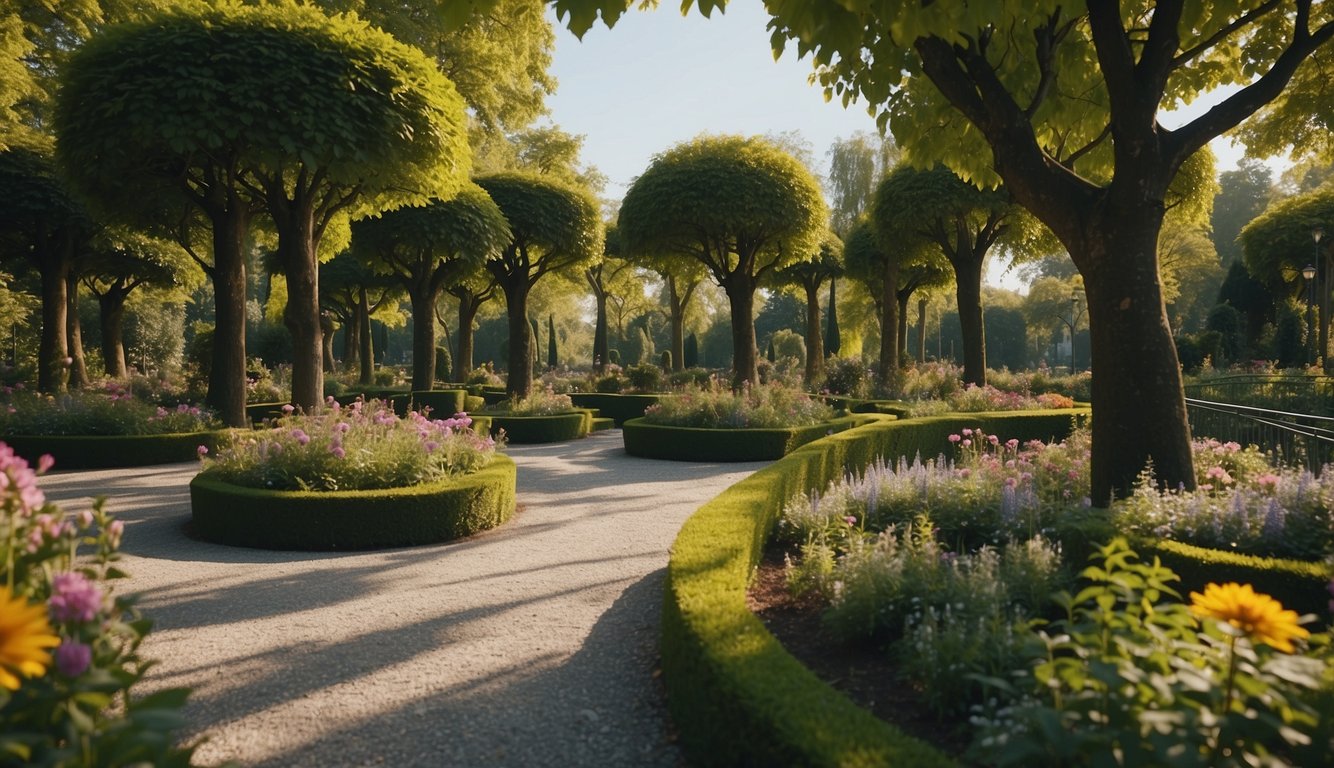
As we reflect on the verdant spaces of Milan, let’s recap their significance and consider what the future holds for these green havens.
Recap and Final Thoughts
Our exploration of Milan’s gardens revealed not only their beauty but also their historical and ecological importance. At the forefront is the innovative Bosco Verticale, a sterling example of sustainable urban living. We also walked through Leonardo’s Vineyard, where history is carefully entwined with the tranquility of nature. Milan’s commitment to greenery, as evident from the Parco Ravizza, offers both residents and visitors alike an escape from the urban rush.
Future Prospects
The prospects for Milan’s gardens are bright, with ongoing projects such as the City Life Park showcasing a harmonious integration of modern design with green spaces. As we look towards the future, our collective efforts in environmental stewardship and innovative design will continue to enhance these gardens, ensuring they remain an essential piece of Milan’s urban fabric.
Frequently Asked Questions

Our deep understanding of Milan’s gardens allows us to share insights into the most common inquiries of travelers and locals alike. From entry details to their visual splendor, we address these questions for those keen to explore Milan’s green spaces.
What are some famous gardens one can visit in Milan?
Some of the most famous gardens in Milan include the Sempione Park, known for its sprawling green lawns and pathways, and the Botanical Garden of Brera (Orto Botanico di Brera), a historic garden offering a quiet retreat in the bustling city.
Where can I find botanical gardens in the city of Milan?
The Botanical Garden of Brera is a notable botanical garden nestled in the city of Milan. It’s a beautifully maintained area that promises an educational and tranquil experience for visitors.
Are there any gardens in Milan that can be accessed free of charge?
Yes, there are several gardens in Milan that can be accessed without any charge, including the vast Sempione Park and the Guastalla Garden. These spaces provide a serene escape from the urban pace at no cost.
What are the ticketing details for prominent gardens in Milan?
While many gardens are free to enter, some specialized gardens may have an entrance fee. For up-to-date information on ticketing, referral to the specific garden’s website or contacting them directly is advised.
Which gardens in Milan are considered the most beautiful?
Beauty is subjective, but many regard the Bosco Verticale (Vertical Forest), with its innovative vertical garden design, and the expansive Sempione Park, with its classic landscaping, as among the most beautiful gardens in Milan.
Can you provide information on indoor garden attractions in Milan?
For an indoor garden experience, the Bosco Verticale stands out with its vertically layered gardens that form part of the building architecture, offering a unique synthesis of nature and urban living.

